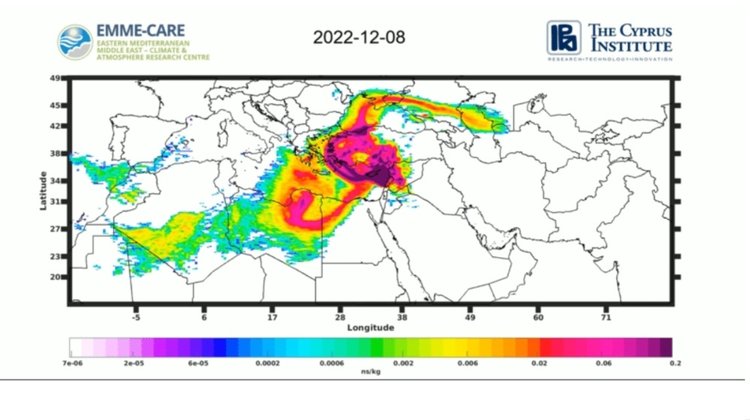Three-year timelapse shows movement of air masses across Cyprus
07:08 - 27 March 2024

Researchers at The Cyprus Institute’s Climate and Atmosphere Research Center (CARE-C) recently conducted a three-year timelapse showing a visual representation of movement of air masses across the region of Cyprus and the Eastern Mediterranean from 2021 to 2023.
Utilising weather data and the FLEXPART model, CARE-C aimed to assess the origins of the air masses and consequently enhance our understanding of the origins of air pollutants measured at the CAO Ineia station.
In 2021, CARE-C’s Cyprus Atmospheric Observatory (CAO) established a station at Ineia village in Paphos, (CAO-INE), dedicated to monitoring greenhouse gases at the western coast of Cyprus, within the Akamas Peninsula, a proclaimed Natura area.
Cyprus is located in the Eastern Mediterranean (EM), a region that essentially connects three continents: Asia, Africa, and Europe. According to CARE-C, unlike many other European countries, which find themselves surrounded by a homogeneous policy framework, Cyprus finds itself bordering with different ones in every direction. “The prevailing northerly winds, mainly influenced from the East parts of Europe and Turkey as well as the East Mediterranean Sea, are indicative of the pollution outflow of Eastern Europe,” it said. “This strategic location facilitates the quantification of emissions from East Europe and the collection of crucial insights into the atmospheric transport patterns influencing air quality over Cyprus.”
These transport patterns are visualised using the dedicated dispersion model FLEXPART over a three-year period (2021-2023) allowing the visual exploration of the movement of these air masses and gain insights into their origins. Within a concise 6-hour temporal window, these daily retroplumes – artificially created plumes going backwards in time – provide information on the dynamic nature of atmospheric transport. To denote the time an air mass stays over a location, the potential emission sensitivity whose dimension is ns/kg was used, instead of the exact time, to denote that an air mass is influenced by the combination of emission levels and time over a certain area.
The timelapse was implemented by CARE-C technical research specialist Pierre-Yves Quéhé, in collaboration with CARE-C associate research scientist, Dr Michael Pikridas.
Watch the timelapse video:
